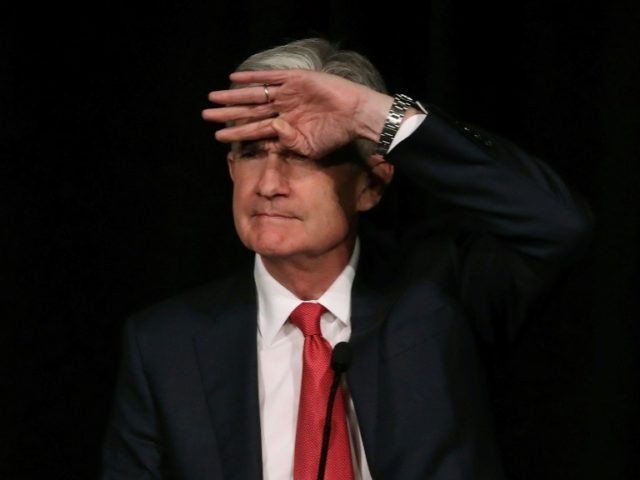Federal Reserve officials on Wednesday revealed new projections for the economy that reveal central bankers now expect the economy to grow less while inflation, unemployment, and interest rates to run higher than previously forecast.
Even with the revisions, however, Fed officials appear to be somewhat optimistic—although less so than at previous meetings—that they can bring down inflation without a big jump in unemployment or a recession. Fed Chariman Powell did say the path to a softish landing is “getting more challenging.”
“There’s a pathway but its not going to be easy,” Powell said. “It will depend on some things we do not control.”
The median projection of Federal Open Market Committee members for economic growth this year fell to 1.7 percent from 2.8 percent projected at the March meeting. Next year’s GDP growth was downgraded to 1.7 percent from 2.2 percent and 2024’s forecast fell to 1.9 percent from two percent.
The unemployment rate projected for this year was raised to 3.7 percent from 3.5 percent. In May, the unemployment rate was 3.6 percent, which means that the Fed now thinks unemployment will climb this year instead of ticking down or remaining largely steady at the current very low levels. Next year’s unemployment rate is projected at 3.9 percent, up from 3.5 in the March projections. Unemployment is now expected to rise to 4.1 percent unemployment in 2024, up from 3.6 at the March meeting.
Inflation, as measured by the Personal Consumption Expenditure price index, is expected to run at a 5.2 percent rate this year, up from the 4.2 percent rate projected in March. Interestingly, however, Fed officials think the central bank will bring 2023 and 2024 inflation lower than it projected in March. The 2023 inflation rate is now projected at 2.6 percent, down from 2.7 percent, and the 2024 rate is seen as falling to 2.2 percent, one-tenth of a point lower than in March.
Core PCE inflation, which excludes volatile food and energy prices, is projected to rise 4.3 percent, up from 4.1 percent, this year. Next year is expected to see 2.7 percent, up from 2.6 percent. The 2024 projection remained unchanged at 2.3 percent.
The Fed Funds rate target, which is directly controlled by Fed officials, is now seen as rising to 3.4 percent by year end, up from 1.9 percent at the March meeting. The 2023 year-end rate is expected to be 3.8 percent, a full percentage point higher than in March. The 2024 rate is seen as going to 3.4 percent, up from the March projection of 2.8 percent.
Chairman Powell emphasized that these are not policy plans, even when it comes to the rate target set by the Fed. Instead, these are estimates based on where Fed officials think the economy is headed.
The long-run projections remained unchanged except for the Fed Funds rate. This moved up from 2.4 percent to 2.5 percent.
The Fed on Wednesday announced that it was hiking its target rate by 0.75 percent to a range of 1.5 percent to 1.75 percent. At a press conference after the Fed’s announcement, Powell indicated that Fed officials had been planning a smaller hike but changed their mind as May inflation and inflation expectations arrived late last week and early this week.

COMMENTS
Please let us know if you're having issues with commenting.